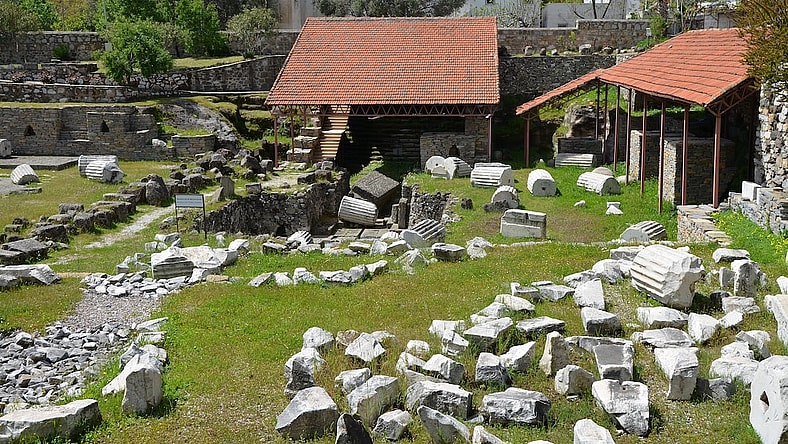
Also known as the Seven Wonders of the World or the Seven Wonders, these notable structures have influenced the world for centuries, with the first known list of the wonders dating back to the 2nd-1st century BC. While the entries have varied over the centuries, the seven wonders of the ancient world are the Colossus of Rhodes, the Temple of Artemis, the Mausoleum at Halicarnassus, the Statue of Zeus at Olympia, the Lighthouse of Alexandria, the Great Pyramid of Giza, and the Hanging Gardens of Babylon.
Of the seven wonders, only one remains standing, as the others have been destroyed over the centuries. Keep reading to learn more about each of the seven wonders of the ancient world here.
7. Colossus of Rhodes, Greece
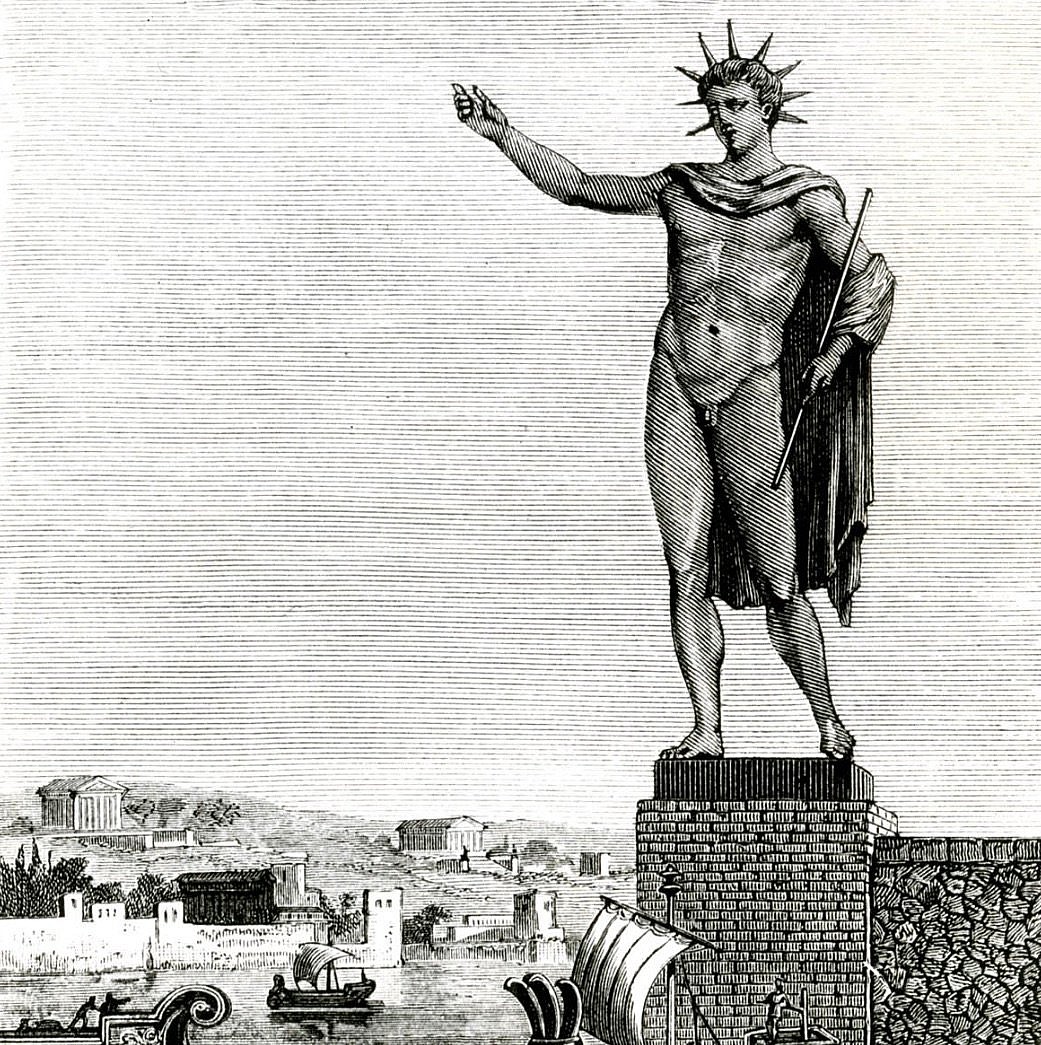
The Colossus of Rhodes was built in 282 BC and later destroyed by an earthquake in 226 BC. Aiming to represent the sun god Helios, the people of Rhodes started building the statue in 294 BC to pay tribute for emerging victorious after a long siege.
The Colossus was constructed with bronze, reinforced with iron, and weighed down with stones. Once thought to be straddling Mandrákion harbor, this is now considered impossible and was more likely standing beside the harbor.
When an earthquake hit in 226 BC, the statue snapped at the knees and fell onto the land. The Oracle of Delphi suggested it fell due to the people of Rhodes offending Helios, and the statue was never rebuilt, but many continued to visit the toppled wonder.
RELATED: What Is the Most Popular Tourist Destination in the World?
6. Temple of Artemis at Ephesus, Turkey
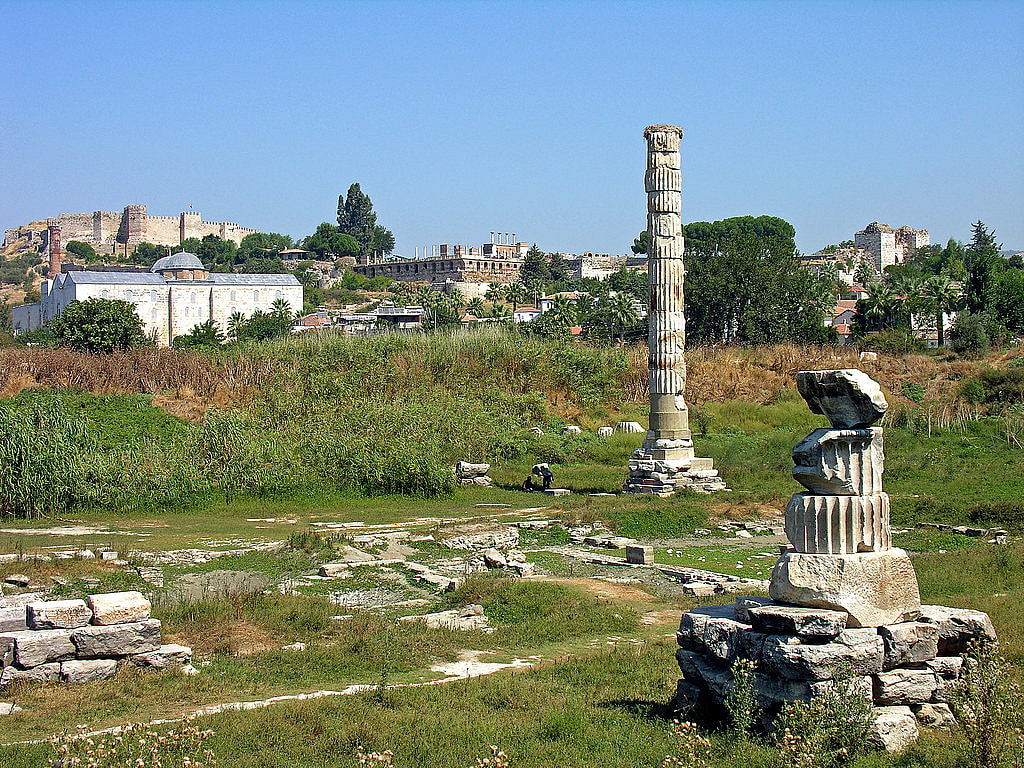
Two of the Seven Wonders of the Ancient World reside in Turkey, with one of them being the Temple of Artemis at Ephesus. The temple was built in 550 BC and was destroyed by fire in 356 BC, getting built and rebuilt over many years. The most famous was the original, funded by King Croesus of Lydia.
Unlike other temples during the period, the Temple of Artemis was built with marble and embellished with gold. The foundation led to a high platform that featured one hundred sculptured columns that supported the roof.
It was at least twice the size of the Parthenon and housed many works of art, with the most famous being the statue of Artemis herself. Although it was rebuilt several times, the temple was left to be destroyed by man, nature, and neglect.
5. Mausoleum at Halicarnassus, Turkey

Next up for the Seven Wonders of the Ancient World is the Mausoleum at Halicarnassus, also located in Turkey. The monument was built in 352 BC as a tomb for Mausolus, a governor in the Persian Empire, but was destroyed by an earthquake in 1404 AD. Sparing no expense, his wife commissioned Greek architects and artists to design to entire monument.
The whole thing was nearly 14 stories tall, with the base spanning 10,000 square feet. The tomb had nine columns on each side, and the top was a stepped pyramid that featured a four-horse marble chariot on top.
Standing for nearly 17 centuries, a series of earthquakes toppled the monument, but it had become so famous that Mausolus’s name has become a root word for large tombs in many languages (ex: “mausoleo” in Spanish).
CHECK OUT: What Is the Oldest Artifact in the World?
4. Statue of Zeus at Olympia, Greece
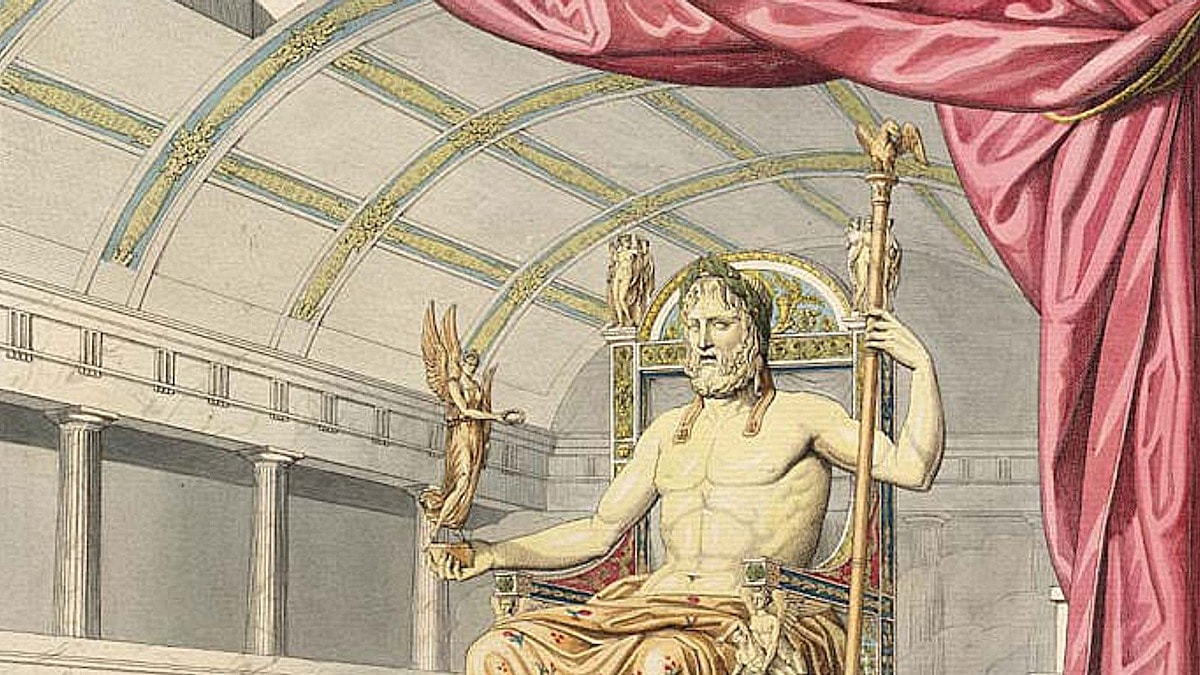
Of course, Greece is home to one of the Seven Wonders of the Ancient World, the Statue of Zeus at Olympia. The statue was carved from ivory on a throne of cedarwood by the Greek sculptor Phidias around 430 BC. In its right hand was a life-size statue of Nike, the goddess of victory, and in the left was a large scepter topped with an eagle.
The whole thing stood nearly 40 feet tall and was said to fill the entire width of one of the aisles in the Temple of Zeus. In 426 AD, the temple was destroyed by fire, and many historians believe this was when the statue was also destroyed. There are some, however, that believe the statue was moved to Constantinople and destroyed 50 years later.
ALSO READ: 15 Unexplained Ancient Artifacts From Around The World
3. Lighthouse of Alexandria, Egypt
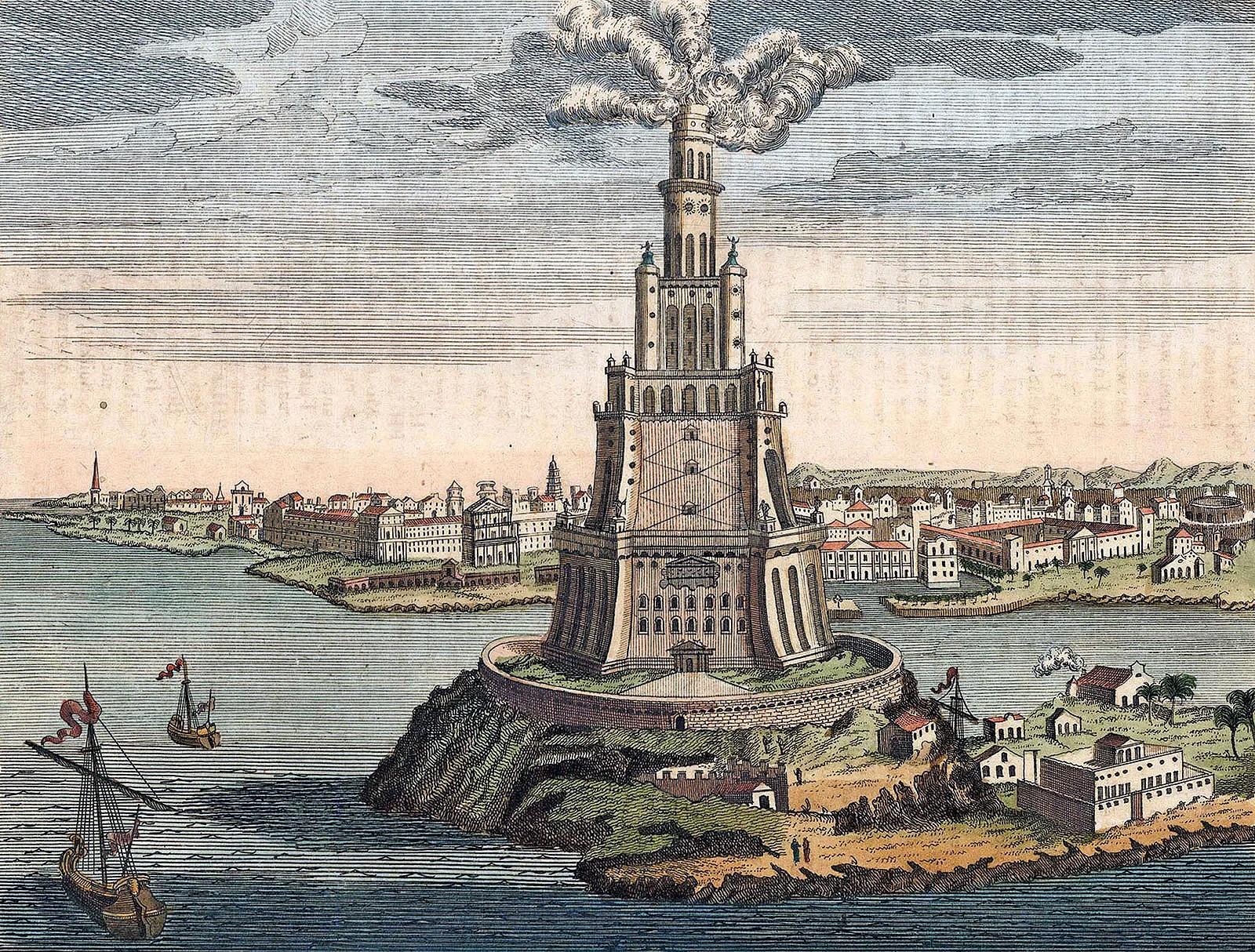
The third construction on our Seven Wonders of the Ancient World list is the Lighthouse of Alexandria, which is perhaps the most famous lighthouse in history. Located on the island of Pharos in the harbor of Alexandria, Egypt, the lighthouse was built in 280 BC in a completely different design than modern lighthouses.
The Lighthouse of Alexandria was built in three stages, all sloping inward with marble blocks and lead mortar. The lowest section was square, the next octagonal, and the top cylindrical. Situated at the top of the lighthouse was a large curved mirror that reflected the sunlight during the day and the fire at night, sending signals up to 35 miles away.
There are many stories as to how it was destroyed in 1323 AD, but the most possible explanation was the nearly 22 earthquakes that transpired between 320 AD and 1323 AD. The Lighthouse of Alexandria was so famous during its time that the island on which it stood, Pharos, became the root word for a lighthouse in many languages (ex: “phare” in French).
2. Great Pyramid of Giza, Egypt
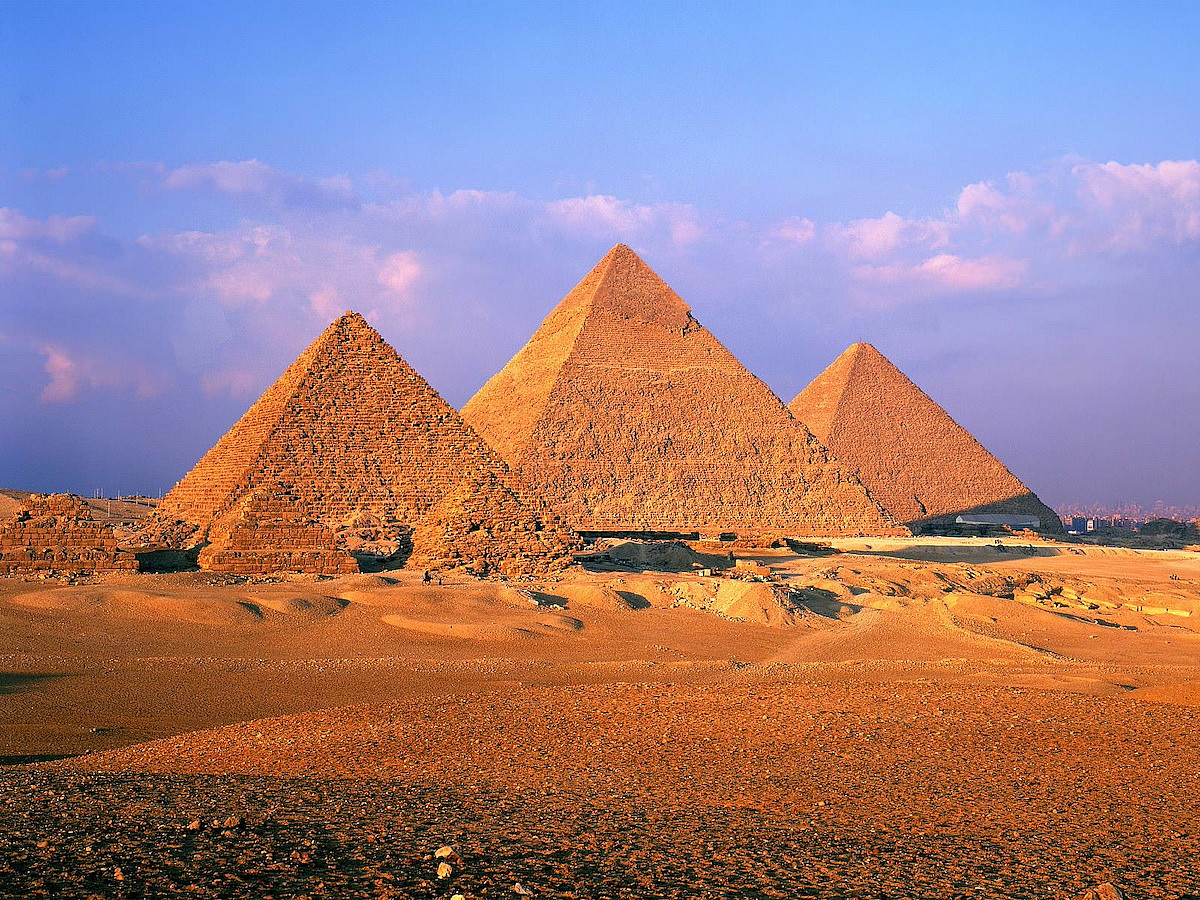
The only still-standing piece of the Seven Wonders of the Ancient World is the Great Pyramid of Giza in Egypt. The pyramid was built as a tomb for the 4th dynasty Egyptian pharaoh named Khufu, believed to have taken 20 years and as many as 100,000 workers to complete in 2570 BC.
The outermost stones used to be highly polished white limestone but were eventually loosened by an earthquake more than 600 years ago and removed to help build cities and mosques. There is a lot of speculation surrounding the Great Pyramid, especially about construction methodologies and intentions. These include references to the moon, the Orion constellation, continental gravity, and more.
What is known about the pyramid is that the four sides are more than 700 feet long and differ in length by no more than eight inches. Each side is almost perfectly aligned with the four cardinal points of a compass, and the dimensions convert to a ratio that equates to 2π almost perfectly.
CHECK OUT: 10 Strangest Days in Human History
1. Hanging Gardens of Babylon, Iraq
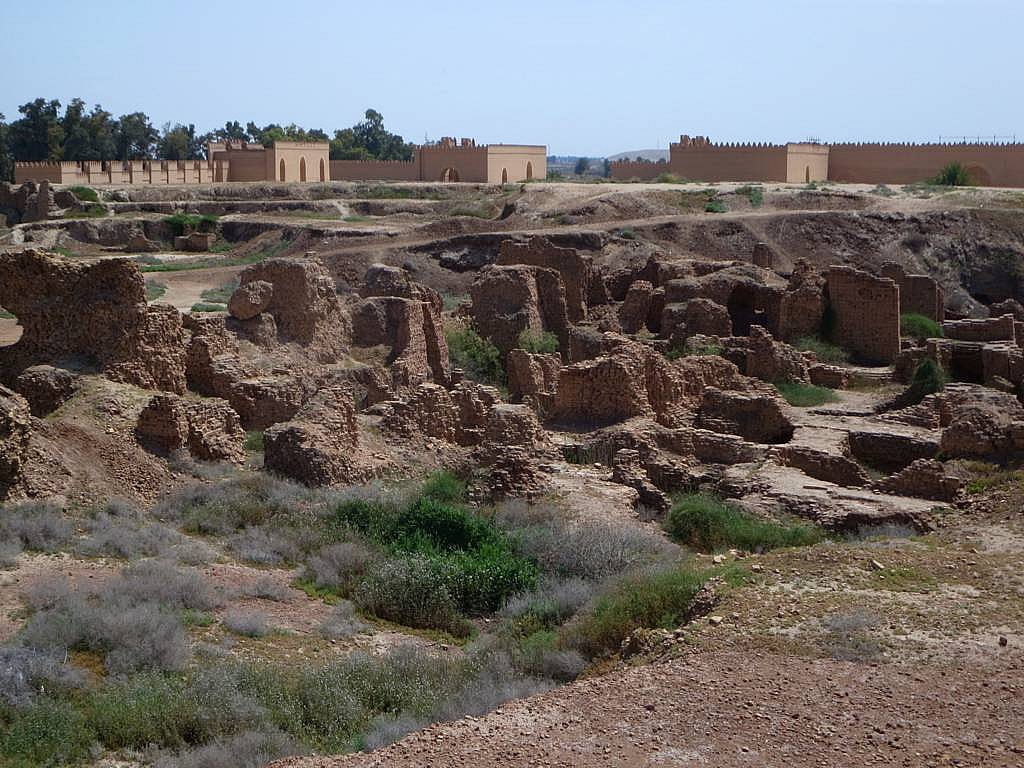
Last but not least for the Seven Wonders of the Ancient World is the infamous Hanging Gardens of Babylon. The most intriguing piece about the gardens is that there is significant controversy about whether they existed at all.
Whether they did exist or not, the wonder was built in 600 BC and was destroyed by an earthquake in 226 BC. Many accounts and poetic descriptions have been made about the gardens, which were believed to have been built by King Nebuchadrezzar II for his wife. Some research suggests the gardens to be a series of rooftop gardens, while others say the gardens were built into the walls of the royal palace.
One of the reasons many do not believe it’s true is because Babylon is located in the middle of the desert, so how would so much greenery survive? Recent excavations possibly show a series of irrigation tubes that brought water to the gardens, but others say the gardens weren’t even in Babylon at all but rather at the eastern bank of the Tigris River. Regardless of the numerous speculations, the Gardens of Babylon were cemented into the minds of poets and ancient historians.


